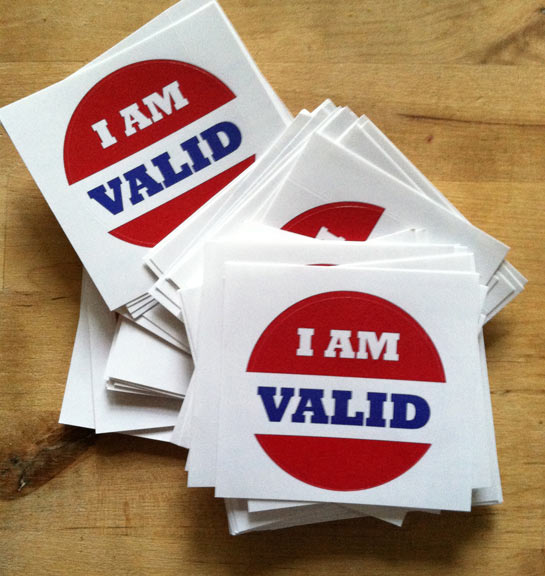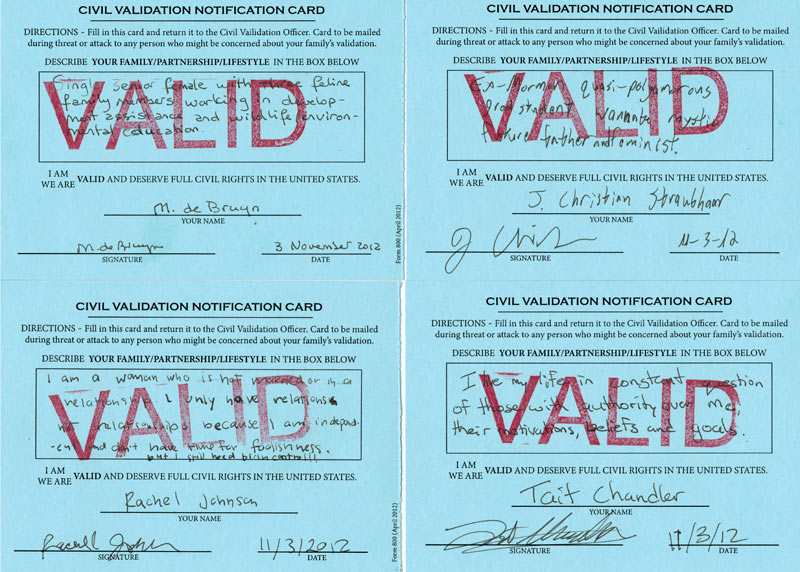Stacey Kirby uses art to start conversations. Raised in the South and currently living in Durham, NC, she is constantly observing and responding to the issues around her. For Kirby, art is a means of asking questions and eliciting dialogue. She employs the unique format of what she calls “performative interactions,” combining installation and performance art to create scenarios that provoke thought and empower participants. Over the past nine years, Kirby has conducted over 115 performances, logging 500 hours, and involving 4,000 participants.
Kirby studied Studio Art and Journalism at the University of North Carolina at Chapel Hill and now works in the Conservation department at the North Carolina Museum of Art. She cites an array of influences – her mother, who ran a court reporting business out of the family home, the concept of power connoted by a suit and tie, the vintage office environment. Handwritten forms and paperwork appear in her work, as a result of her fascination with historical archives and nostalgia for a non-digital world. Most of all, she draws inspiration from experiencing the world around her. The topics of identity, community, and belonging form the core of her work.

Kirby creates art for herself as much as for her audience. Her projects have contributed immensely to her own personal growth, allowing her to grapple with difficult questions and find her place in the world. In The Declaration Project, she asks each participant, ‘what personal belongings do you bring with you into the space?’ While encouraging participants to explore their emotional baggage, she poses the same questions to herself. Through this project and others, she has grown into her identity as both an artist and a woman.
Though Kirby’s work is not solely political, discriminatory legislation in her home state of North Carolina provoked artistic response. Troubled by issues of race, privilege, and discrimination, Kirby used VALIDnation to promote discussion and help her community deal with divisive issues. “I needed to take a piece to the streets and discuss this idea of validity with the people of North Carolina,” she said. In this performance, an officer asks each participant to fill out a Civil Validation Notification card and then decides whether he or she is approved. Each participant receives a bright red stamp of validation.
Because her work is often unorthodox in medium, Kirby’s creative process differs from a traditional visual or performance artist. She begins with a question, provoked by an experience. She then envisions the ideal scenario to invite participants to engage in dialogue. This includes choosing a location, props, format, and how she should act to facilitate the performance. Each choice is geared towards encouraging interaction and empowering participants with their own voice. Kirby documents each installation and uses social media to more widely distribute the dialogue. Often, the performances include a physical product, such as cards visitors fill out that can be mailed or archived.

By the nature of Kirby’s work, performances rely on visitor participation, creating a variable element. Some participants are confused or hesitant, uncertain of the situation or reluctant to engage. But Kirby accepts each response: “I always embrace and respect the conversation around our individual definitions of art.” She sees each interaction as an opportunity for growth and connection. Kirby is often surprised and inspired by the public’s willingness to participate. “The depth and sincerity offered during the work is beautiful. They dive into the questions that I pose and engage in discussion,” she said. “I find that most people truly want their voices to be heard.”
—Sarah Russell, Gibbes Museum of Art Summer Intern
Top image: In a performance of The Declaration Project, participants fill out declaration cards listing the physical and emotional belongings they have brought into the room.
Published August 5, 2016

